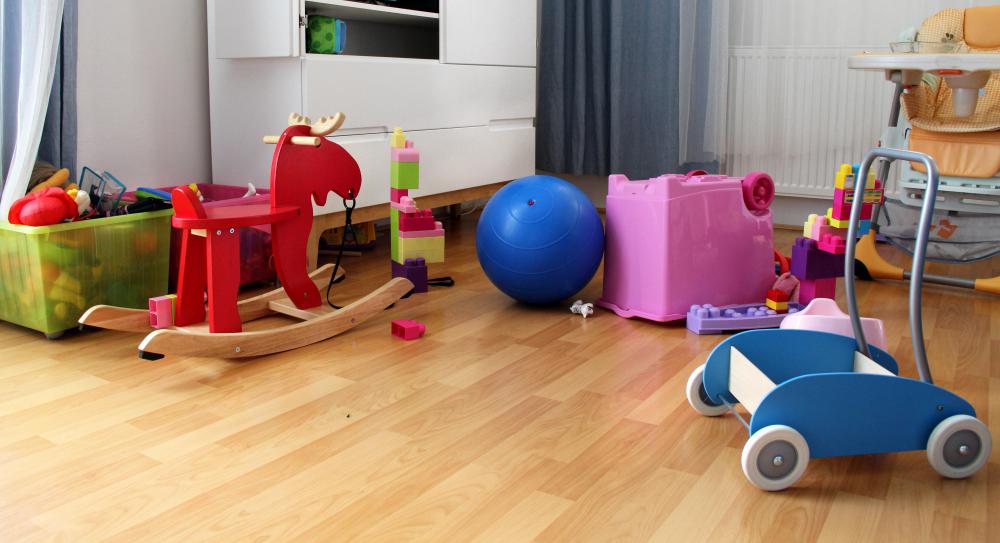At WiseGEEK, we're committed to delivering accurate, trustworthy information. Our expert-authored content is rigorously fact-checked and sourced from credible authorities. Discover how we uphold the highest standards in providing you with reliable knowledge.
How do I Choose the Best Toy Organizer?
A toy organizer can be a great way to help keep children's rooms, playrooms, or even family rooms, more neat and clean. It is important to choose a toy organizer that can withstand heavy use, that is safe for kids to use, and makes it easy for them to access their toys and put them away. You might also want to choose one that matches the decor of the rest of the room; some people even choose to repurpose old furniture with paint or stenciling to make it better match the surrounding decor.
Ideally, a toy organizer should have different compartments for different sized toys to be stored, especially toys that have a number of little pieces. This can be shelves of different sizes, such as stackable cube shelves that resemble bookcases, but are often used for in children's rooms. Toy boxes are another option, which may be a good option for smaller children because they are lower to the floor. Dividers can be used in a large toy box to help keep it neater, and make it easier for kids or parents to find certain toys. Helping kids to learn to put things back in their proper place can be made easier with a toy organizer with designated compartments.

Safety is another very important consideration when choosing a toy organizer. Anything that has the potential to fall on a child if he or she attempts to climb it or pulls on it, such as book cases or shelving, should be bolted securely to the wall. A toy box with a hinged lid should have guards that prevent kids from placing their fingers inside the hinges, and bumpers to prevent the lid from closing on the child's fingers. Sharp edges on a lower toy box should also have corner guards applied to prevent any injuries from bumps or falls.

The decorative appeal of a toy organizer is less important than its function and safety, but decor is still a necessary consideration for many people as well. Purchasing children's furniture in neutral colors is generally a good idea, because then it can be used in a different area of the house if it is no longer needed in the child's room at some point. Some people choose to simply take used furniture from another room, such as an old trunk, and repurpose it as a storage solution in a child's room; this can be done by repainting or staining a piece of furniture, or even adding some decorative stencils to make it more appealing to kids.
AS FEATURED ON:
AS FEATURED ON:













Discuss this Article
Post your comments